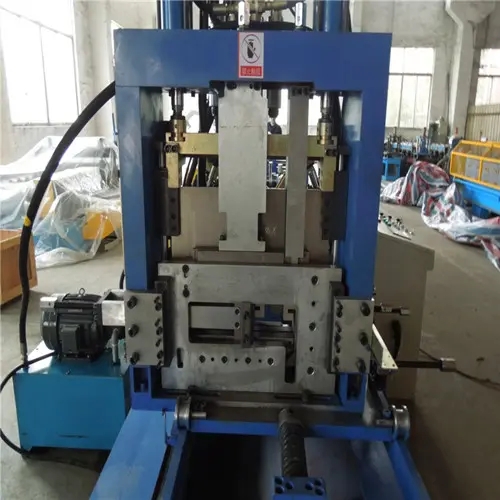
Understanding Guard Rail Forming Machines A Comprehensive Overview
In today's industrial landscape, safety infrastructure plays a pivotal role in ensuring the protection of drivers and pedestrians alike. One key component of this infrastructure is guard rails, which are designed to prevent vehicles from veering off the road and causing accidents. The technology behind manufacturing these essential safety features has advanced significantly, with guard rail forming machines becoming vital tools in the production process.
What is a Guard Rail Forming Machine?
A guard rail forming machine is a piece of industrial equipment specifically designed to manufacture guard rails used on highways, roads, and bridges. These machines can shape various materials, but they primarily work with steel and aluminum, producing rails that can withstand the impacts of vehicles while maintaining structural integrity. The forming process typically involves bending, cutting, and welding to create the desired design and dimensions of the guard rails.
How Does It Work?
The operation of a guard rail forming machine is a multi-step process. Initially, the raw material is fed into the machine, where it undergoes a series of processes including roll forming, where the metal is gradually shaped into the desired profile through a set of rollers. These rollers operate at precise angles and pressures to ensure consistent quality.
After the initial forming, the guard rails often require additional processes like punching holes for installation or applying protective coatings to enhance resistance against weather elements. Some machines are also equipped with integrated welding capabilities, allowing for seamless connections between sections of guard rail.
Top-of-the-line models feature automation and computer numerical control (CNC) technology, ensuring greater precision and efficiency. With programmable settings, operators can quickly switch between different guard rail designs and sizes, thus enhancing flexibility in production.

Importance in Safety and Efficiency
The importance of guard rail forming machines cannot be overstated, particularly when considering road safety. Well-manufactured guard rails can significantly reduce the severity of accidents by redirecting vehicles back onto the road. However, the effectiveness of these rails is only as good as the quality of their construction. High-quality forming machines ensure that the produced guard rails meet stringent safety standards, which is crucial for regulatory compliance.
Moreover, the efficiency offered by modern guard rail forming machines contributes to faster production times. In an era of heightened demand for infrastructure improvements and upgrades, manufacturers equipped with advanced forming systems can fulfill orders swiftly without compromising on quality. This capability allows for timely project completions and can lead to overall cost savings for contractors and government agencies.
Innovations in the Industry
The guard rail forming machine industry has seen several innovations that have improved manufacturing processes. Developments in materials science have led to stronger yet lighter metals, making guard rails more effective without adding significant weight. Additionally, advancements in machine technology, such as improved hydraulic systems and energy-efficient motors, have made machines faster and more reliable.
Furthermore, there is a growing trend towards sustainability in manufacturing. Many modern guard rail forming machines are designed to minimize waste and energy consumption, thereby reducing the overall environmental impact of production.
Conclusion
In conclusion, guard rail forming machines are indispensable in the production of essential safety structures found on roads and highways. Their advanced technologies and capabilities enhance both the efficiency of manufacturing and the quality of the final products. As the demand for improved road safety measures grows, the role of guard rail forming machines will only continue to expand, solidifying their place at the forefront of industrial manufacturing. By understanding the intricacies of these machines, stakeholders can appreciate their critical contribution to road safety and infrastructure development.